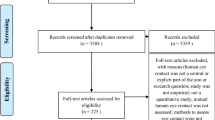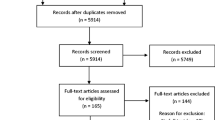Abstract
Development of accurate Situation Awareness (SA) depends on experience and may be impaired during excessive workload. In order to gain adequate SA for decision making and performance, anaesthetists need to distribute visual attention effectively. Therefore, we hypothesized that in more experienced anaesthetists performance is better and increase of physiological workload is less during critical incidents. Additionally, we investigated the relation between physiological workload indicators and distribution of visual attention. In fifteen anaesthetists, the increase of pupil size and heart rate was assessed in course of a simulated critical incident. Simulator log files were used for performance assessment. An eye-tracking device (EyeSeeCam) provided data about the anaesthetists’ distribution of visual attention. Performance was assessed as time until definitive treatment. T tests and multivariate generalized linear models (MANOVA) were used for retrospective statistical analysis. Mean pupil diameter increase was 8.1 % (SD ± 4.3) in the less experienced and 15.8 % (±10.4) in the more experienced subjects (p = 0.191). Mean heart rate increase was 10.2 % (±6.7) and 10.5 % (±8.3, p = 0.956), respectively. Performance did not depend on experience. Pupil diameter and heart rate increases were associated with a shift of visual attention from monitoring towards manual tasks (not significant). For the first time, the following four variables were assessed simultaneously: physiological workload indicators, performance, experience, and distribution of visual attention between “monitoring” and “manual” tasks. However, we were unable to detect significant interactions between these variables. This experimental model could prove valuable in the investigation of gaining and maintaining SA in the operation theatre.


Similar content being viewed by others
References
Schulz CM, Schneider E, Fritz L, Vockeroth J, Hapfelmeier A, Brandt T, Kochs EF, Schneider G. Visual attention of anaesthetists during simulated critical incidents. Br J Anaesth. 2011;106:807–13.
Schulz CM, Endsley MR, Gelb AW, Kochs EF, Wagner KJ. Situation awareness in anesthesia: concept and research. Anesthesiology 2013 [Epub ahead of print].
Wright MC, Taekman JM, Endsley MR. Objective measures of situation awareness in a simulated medical environment. Qual Saf Health Care. 2004;13(Suppl 1):i65–71.
Endsley MR. Towards a theory of situation awareness in dynamic systems. Hum Factors. 1995;37:32–64.
Gaba DM, Howard SK, Small SD. Situation awareness in anesthesiology. Hum Factors. 1995;37:20–31.
Endsley MR. Expertise and situation awareness. In: Ericsson KA, Charness P, Feltovich P, Hoffman R, editors. The Cambridge handbook of expertise and expert performance. New York: Cambridge University Press; 2006. p. 633–51.
Hogan MP, Pace DE, Hapgood J, Boone DC. Use of human patient simulation and the situation awareness global assessment technique in practical trauma skills assessment. J Trauma. 2006;61:1047–52.
Kahnemann D. Attention and effort. New Jersey: Prentice Hall; 1973.
Jordan P. An introduction to usability. Boca Raton: CRC Press; 1998.
Endsley MR, Bolstad CA. Individual differences in pilot situation awareness. Int J Aviat Psychol. 1994;3:241–64.
Leedal JM, Smith AF. Methodological approaches to anaesthetists’ workload in the operating theatre. Br J Anaesth. 2005;94:702–9.
Schulz CM, Schneider E, Fritz L, Vockeroth J, Hapfelmeier A, Wasmeier M, Kochs EF, Schneider G. Eye-tracking for assessment of workload: a pilot study in an anaesthesia simulator environment. Br J Anaesth. 2011;106:44–50.
Schulz CM, Skrzypczak M, Schneider E, Hapfelmeier A, Martin J, Kochs EF, Schneider G. Assessment of subjective workload in an anaesthesia simulator environment: reliability and validity. Eur J Anaesthesiol. 2011;28:502–5.
Brandt T, Glasauer S, Schneider E. A third eye for the surgeon. J Neurol Neurosurg Psychiatry. 2006;77:278.
Schneider E, Villgrattner T, Vockeroth J, Bartl K, Kohlbecher S, Bardins S, Ulbrich H, Brandt T. EyeSeeCam: an eye movement-driven head camera for the examination of natural visual exploration. Ann NY Acad Sci. 2009;1164:461–7.
Gorges M, Staggers N. Evaluations of physiological monitoring displays: a systematic review. J Clin Monit Comput. 2008;22:45–66.
Sanderson PM, Watson M, Russell W, Jenkins S, Liu D, Green N, Llewelyn K, Cole P, Shek V, Krupenia S. Advanced auditory displays and head-mounted displays: advantages and disadvantages for monitoring by the distracted anesthesiologist. Anesth Analg. 2008;106:1787–97.
Charabati S, Bracco D, Mathieu PA, Hemmerling TM. Comparison of four different display designs of a novel anaesthetic monitoring system, the ‘integrated monitor of anaesthesia (IMA)’. Br J Anaesth. 2009;103:670–7.
Weinger MB, Herndon OW, Zornow MH, Paulus MP, Gaba DM, Dallen LT. An objective methodology for task analysis and workload assessment in anesthesia providers. Anesthesiology. 1994;80:77–92.
DeAnda A, Gaba DM. Role of experience in the response to simulated critical incidents. Anesth Analg. 1991;72:308–15.
Hart SG, Staveland LE. Development of the NASA-TLX (Task Load Index): results of empirical and theoretical research. In: Hancock PA, Meshkati N, editors. Human mental workload. Amsterdam: Elsevier; 1988. p. 139–83.
Acknowledgments
We gratefully acknowledge the contribution of Klaus Bartl and Stefan Kohlbecher from the Institute of Clinical Neurosciences of the Ludwig-Maximilian-University Munich for technical assistance with the EyeSeeCam as well as Thomas Villgrattner and Heinz Ulbrich from the Institute of Applied Mechanics of the Technical University Munich who provided the camera actuation mechanics. The simulator environment was provided by the Department of Anaesthesiology, Klinikum rechts der Isar, Technical University, Munich. Funding was solely provided by the Department of Anaesthesia, Technical University Munich, Klinikum rechts der Isar.
Ethical standards
The authors declare that the experiments comply with the current laws of the country in which they were performed. Ethical approval for this study (Project No. 2411/09) was provided by the Ethical Committee of the Klinikum rechts der Isar, Technical University Munich. All participants gave written informed consent.
Conflict of interest
The authors declare that they have no conflict of interest.
Author information
Authors and Affiliations
Corresponding author
Electronic supplementary material
Below is the link to the electronic supplementary material.
Supplementary material 1 (AVI 146371 kb)
Rights and permissions
About this article
Cite this article
Schulz, C.M., Schneider, E., Kohlbecher, S. et al. The influence of anaesthetists’ experience on workload, performance and visual attention during simulated critical incidents. J Clin Monit Comput 28, 475–480 (2014). https://doi.org/10.1007/s10877-013-9443-8
Received:
Accepted:
Published:
Issue Date:
DOI: https://doi.org/10.1007/s10877-013-9443-8




